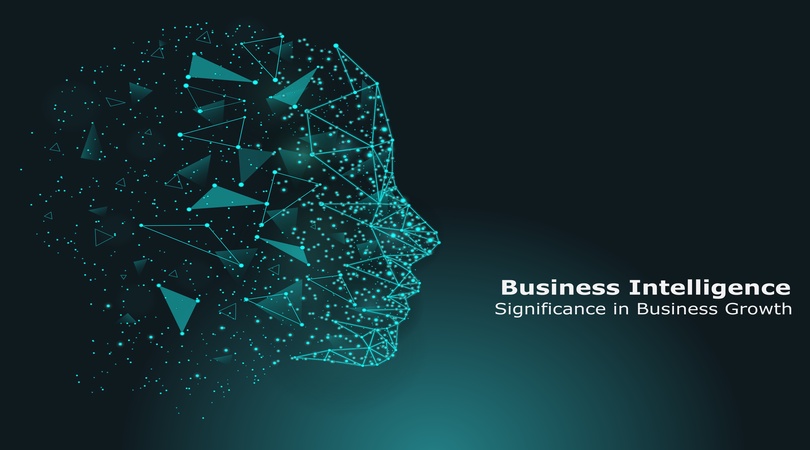In today's data-driven business landscape, information is power. Organizations across industries are generating vast amounts of data, ranging from customer interactions and sales figures to market trends and operational metrics. The challenge lies in extracting meaningful insights from this data to drive informed decision-making and strategic planning. This is where Business Intelligence (BI) and Analytics software come into play. These powerful tools empower businesses to turn raw data into actionable insights, helping them stay competitive and agile in an ever-evolving market.
Understanding Business Intelligence and Analytics
Business Intelligence refers to the technologies, processes, and strategies that enable organizations to collect, analyze, and present business data to support better decision-making. Analytics, on the other hand, involves the exploration of data to discover patterns, trends, correlations, and other valuable insights.
BI and Analytics software encompasses a wide range of tools, platforms, and applications designed to streamline data analysis, visualization, and reporting. These tools enable users to create intuitive dashboards, interactive reports, and visual representations of data, making it easier for both technical and non-technical users to understand complex information.
Key Features of Business Intelligence and Analytics Software
-
Data Integration: BI and Analytics software often come with robust data integration capabilities, allowing organizations to connect to various data sources, such as databases, cloud services, spreadsheets, and more. This unified data access eliminates silos and ensures that decision-makers have a comprehensive view of their business.
-
Data Analysis: These tools provide advanced data analysis capabilities, including descriptive, diagnostic, predictive, and prescriptive analytics. Users can explore data to uncover hidden insights, understand historical performance, predict future trends, and even receive recommendations for optimal actions.
-
Data Visualization: Visualization is a critical aspect of BI and Analytics software. These tools offer a range of visualization options, from charts and graphs to maps and heatmaps. Complicated data sets can be transformed into easy-to-understand visuals, aiding in quick comprehension and effective communication.
-
Dashboard Creation: Modern BI software allows users to create customized dashboards that consolidate key metrics and KPIs in one place. Dashboards provide a real-time snapshot of the business's performance and enable users to track progress towards goals, identify bottlenecks, and respond swiftly to changes.
-
Self-Service Analytics: One of the significant advancements in BI and Analytics is the shift towards self-service. Non-technical users can independently explore and analyze data without relying on IT teams. This democratization of data access enhances agility and frees up IT resources for more strategic tasks.
-
Machine Learning Integration: Many BI and Analytics platforms are incorporating machine learning capabilities, enabling automated data analysis, anomaly detection, and pattern recognition. Machine learning algorithms can identify trends that may go unnoticed and offer valuable insights for better decision-making.
-
Predictive Modeling: Business Intelligence and Analytics software empower organizations to perform predictive modeling. By using historical data, these tools can generate forecasts and scenarios that aid in future planning, risk assessment, and proactive decision-making.
-
Collaboration and Sharing: These tools facilitate collaboration by allowing users to share reports, dashboards, and analyses with colleagues. This fosters a culture of data-driven decision-making across different departments and levels of the organization.
Benefits for Businesses
-
Informed Decision-Making: BI and Analytics software provide a data-driven foundation for decision-making. Organizations can make informed choices based on accurate insights, reducing the reliance on gut feelings or guesswork.
-
Competitive Advantage: The ability to extract insights from data sets businesses apart from their competitors. Organizations can identify market trends, customer preferences, and emerging opportunities, giving them a competitive edge.
-
Operational Efficiency: BI and Analytics tools help identify inefficiencies in processes, enabling organizations to streamline operations and allocate resources more effectively.
-
Customer Understanding: By analyzing customer behavior and preferences, businesses can tailor their products and services to meet customer expectations more precisely, enhancing customer satisfaction and loyalty.
-
Risk Management: Predictive analytics in BI software can assist in risk assessment and mitigation. Businesses can anticipate potential challenges and take proactive measures to minimize risks.
-
Strategic Planning: BI and Analytics software support long-term strategic planning by providing insights into market trends, potential disruptions, and emerging opportunities.
-
Real-time Monitoring: With real-time data and dashboards, businesses can monitor their performance and respond promptly to any deviations from expected outcomes.
Challenges and Considerations
While BI and Analytics software offer immense benefits, implementing and leveraging these tools come with challenges:
-
Data Quality and Integration: Ensuring data accuracy and integrating disparate data sources can be complex and time-consuming.
-
User Adoption: Getting all stakeholders to embrace BI and Analytics tools can be a challenge, particularly among those who are less comfortable with technology.
-
Security Concerns: Handling sensitive business data requires robust security measures to prevent unauthorized access and data breaches.
-
Scalability: As data volumes grow, the software's performance and scalability become crucial considerations.
-
Expertise Gap: Extracting meaningful insights from data requires a certain level of analytical and technical expertise. Organizations need to provide training or hire skilled personnel.
Conclusion
Business Intelligence and Analytics software have become integral tools for organizations looking to harness the power of their data. By providing actionable insights, facilitating data-driven decision-making, and enhancing operational efficiency, these tools contribute to business growth and competitiveness. While challenges exist, the benefits of using BI and Analytics software far outweigh the drawbacks. As technology continues to evolve, organizations that invest in these tools will position themselves for success in the data-driven era.


No comments yet